Chong He
Resource Allocation for Transmissive RIS Transceiver Enabled SWIPT Systems
Nov 15, 2025



Abstract:A novel transmissive reconfigurable intelligent surface (TRIS) transceiver-empowered simultaneous wireless information and power transfer (SWIPT) framework is proposed. The sum-rate of the information decoding (ID) users is maximized by optimizing the TRIS transceiver's beamforming, subject to the energy harvesting (EH) users' quality-of-harvest and the per-antenna power constraints. To solve this non-convex problem, we develop an efficient optimization algorithm. First, the original problem is reformulated as a semi-definite programming (SDP) problem. The resulting SDP problem is then addressed using successive convex approximation (SCA) combined with a penalty-based method. Numerical results demonstrate the effectiveness of the algorithm.
B2LoRa: Boosting LoRa Transmission for Satellite-IoT Systems with Blind Coherent Combining
May 30, 2025Abstract:With the rapid growth of Low Earth Orbit (LEO) satellite networks, satellite-IoT systems using the LoRa technique have been increasingly deployed to provide widespread Internet services to low-power and low-cost ground devices. However, the long transmission distance and adverse environments from IoT satellites to ground devices pose a huge challenge to link reliability, as evidenced by the measurement results based on our real-world setup. In this paper, we propose a blind coherent combining design named B2LoRa to boost LoRa transmission performance. The intuition behind B2LoRa is to leverage the repeated broadcasting mechanism inherent in satellite-IoT systems to achieve coherent combining under the low-power and low-cost constraints, where each re-transmission at different times is regarded as the same packet transmitted from different antenna elements within an antenna array. Then, the problem is translated into aligning these packets at a fine granularity despite the time, frequency, and phase offsets between packets in the case of frequent packet loss. To overcome this challenge, we present three designs - joint packet sniffing, frequency shift alignment, and phase drift mitigation to deal with ultra-low SNRs and Doppler shifts featured in satellite-IoT systems, respectively. Finally, experiment results based on our real-world deployments demonstrate the high efficiency of B2LoRa.
Threshold Strategy for Leaking Corner-Free Hamilton-Jacobi Reachability with Decomposed Computations
May 15, 2025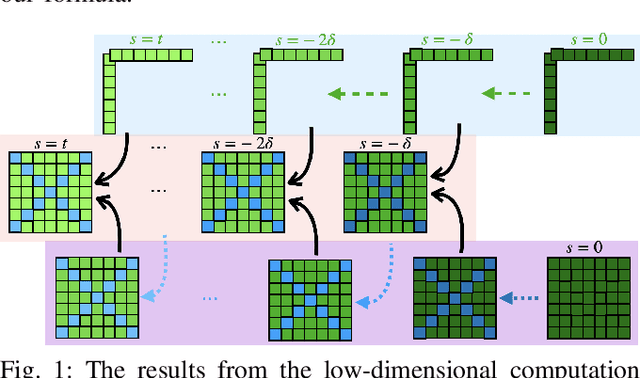
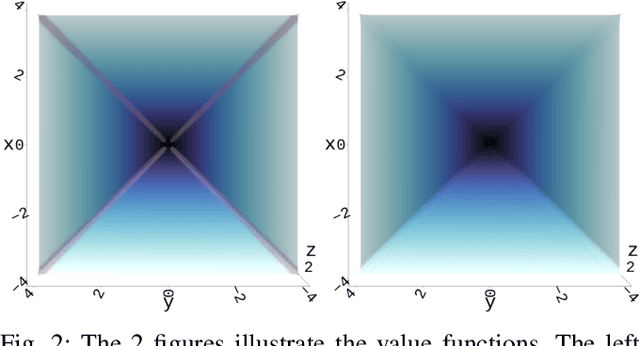
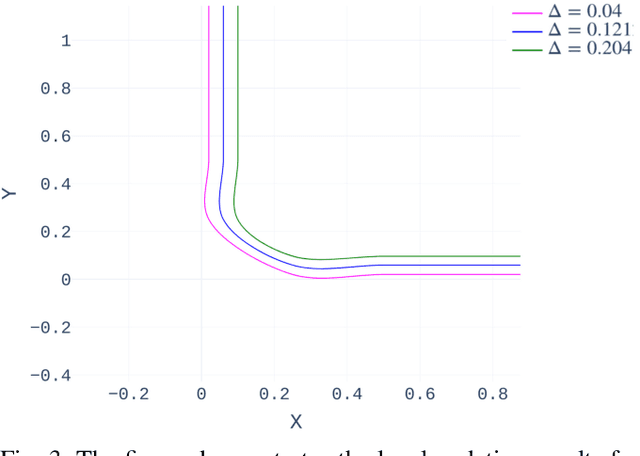
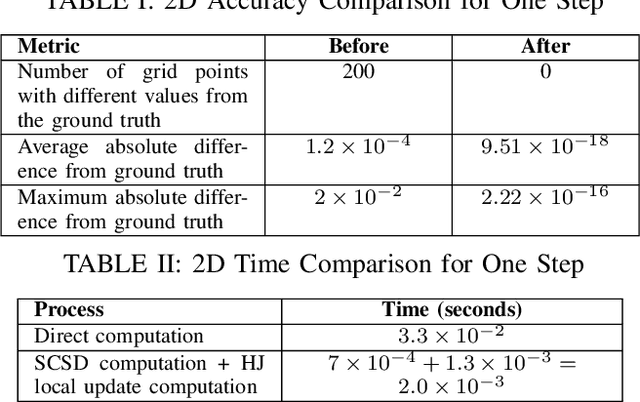
Abstract:Hamilton-Jacobi (HJ) Reachability is widely used to compute value functions for states satisfying specific control objectives. However, it becomes intractable for high-dimensional problems due to the curse of dimensionality. Dimensionality reduction approaches are essential for mitigating this challenge, whereas they could introduce the ``leaking corner issue", leading to inaccuracies in the results. In this paper, we define the ``leaking corner issue" in terms of value functions, propose and prove a necessary condition for its occurrence. We then use these theoretical contributions to introduce a new local updating method that efficiently corrects inaccurate value functions while maintaining the computational efficiency of the dimensionality reduction approaches. We demonstrate the effectiveness of our method through numerical simulations. Although we validate our method with the self-contained subsystem decomposition (SCSD), our approach is applicable to other dimensionality reduction techniques that introduce the ``leaking corners".
Phased Array Calibration based on Rotating-Element Harmonic Electric-Field Vector with Time Modulation
Apr 17, 2025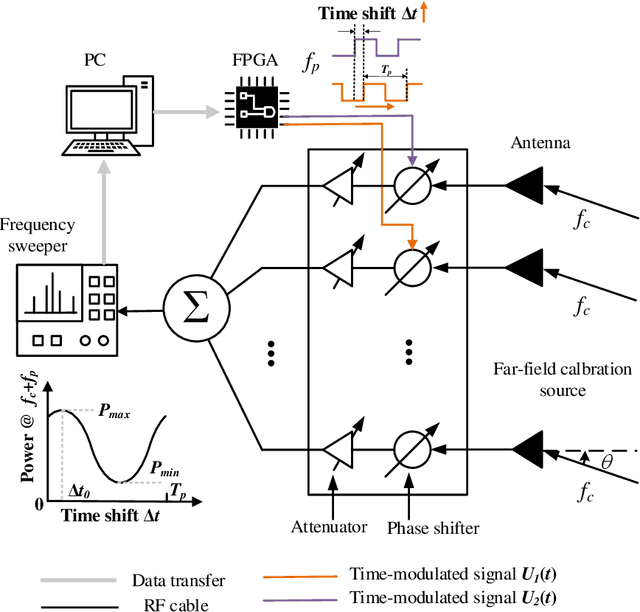
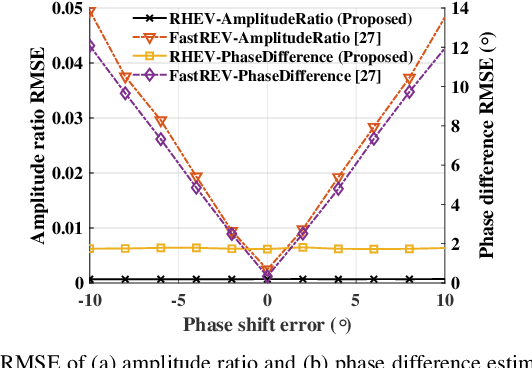
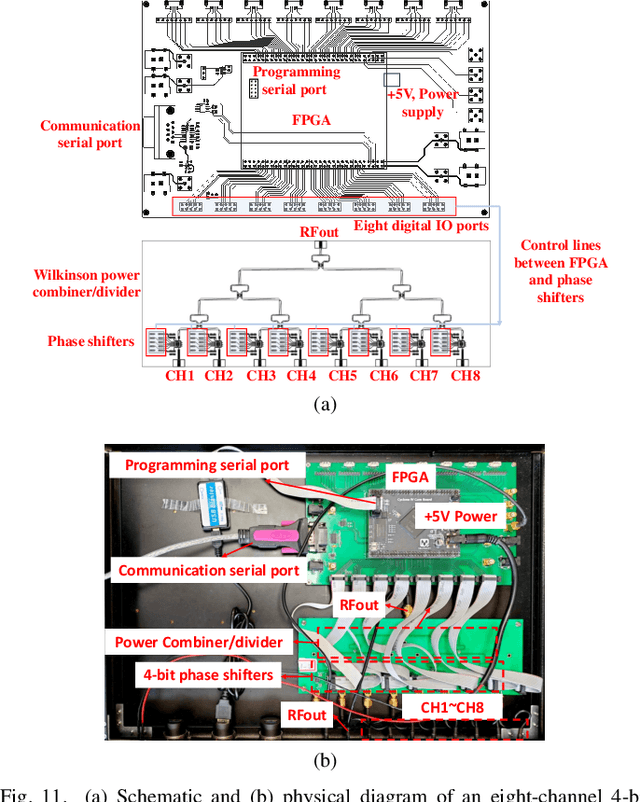
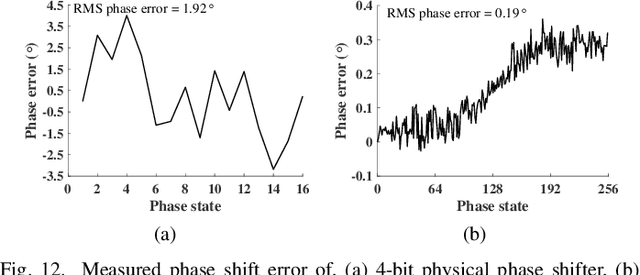
Abstract:Calibration is crucial for ensuring the performance of phased array since amplitude-phase imbalance between elements results in significant performance degradation. While amplitude-only calibration methods offer advantages when phase measurements are impractical, conventional approaches face two key challenges: they typically require high-resolution phase shifters and remain susceptible to phase errors inherent in these components. To overcome these limitations, we propose a Rotating element Harmonic Electric-field Vector (RHEV) strategy, which enables precise calibration through time modulation principles. The proposed technique functions as follows. Two 1-bit phase shifters are periodically phase-switched at the same frequency, each generating corresponding harmonics. By adjusting the relative delay between their modulation timings, the phase difference between the $+1$st harmonics produced by the two elements can be precisely controlled, utilizing the time-shift property of the Fourier transform. Furthermore, the +1st harmonic generated by sequential modulation of individual elements exhibits a linear relationship with the amplitude of the modulated element, enabling amplitude ambiguity resolution. The proposed RHEV-based calibration method generates phase shifts through relative timing delays rather than physical phase shifter adjustments, rendering it less susceptible to phase shift errors. Additionally, since the calibration process exclusively utilizes the $+1$st harmonic, which is produced solely by the modulated unit, the method demonstrates consistent performance regardless of array size. Extensive numerical simulations, practical in-channel and over-the-air (OTA) calibration experiments demonstrate the effectiveness and distinct advantages of the proposed method.
Transmissive RIS Enabled Transceiver Systems:Architecture, Design Issues and Opportunities
Aug 24, 2024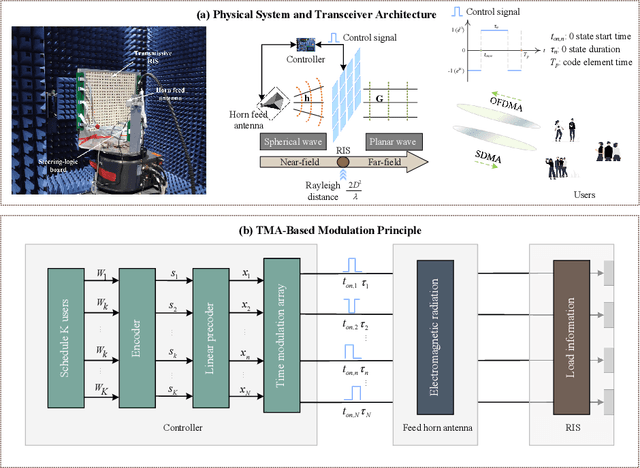
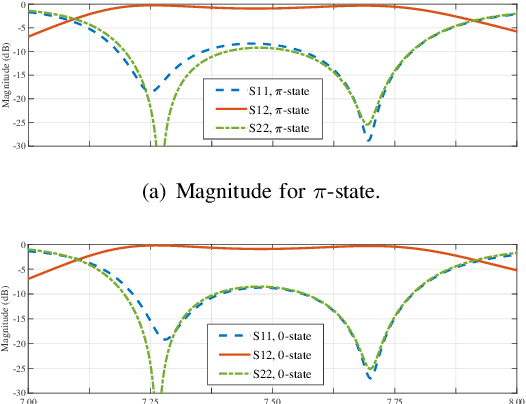
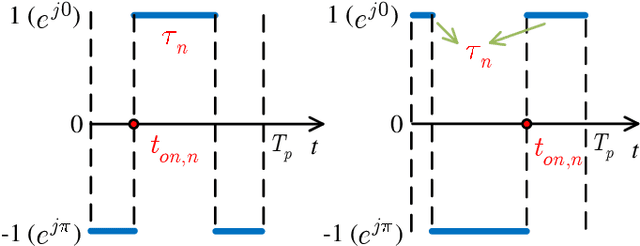
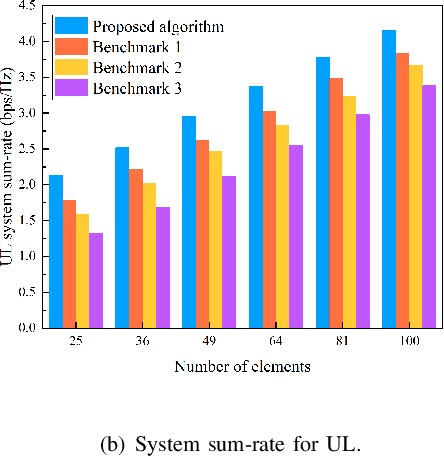
Abstract:Reconfigurable intelligent surface (RIS) is anticipated to augment the performance of beyond fifth-generation (B5G) and sixth-generation (6G) networks by intelligently manipulating the state of its components. Rather than employing reflective RIS for aided communications, this paper proposes an innovative transmissive RIS-enabled transceiver (TRTC) architecture that can accomplish the functions of traditional multi-antenna systems in a cost-effective and energy-efficient manner. First, the proposed network architecture and its corresponding transmission scheme are elaborated from the perspectives of downlink (DL) and uplink (UL) transmissions. Then, we illustrate several significant advantages and differences of TRTC compared to other multiantenna systems. Furthermore, the downlink modulation and extraction principle based on time-modulation array (TMA) is introduced in detail to tackle the multi-stream communications. Moreover, a near-far field channel model appropriate for this architecture is proposed. Based on the channel model, we summarize some state-of-the-art channel estimation schemes, and the channel estimation scheme of TRTC is also provided. Considering the optimization for DL and UL communications, we present numerical simulations that confirm the superiority of the proposed optimization algorithm. Lastly, numerous prospective research avenues for TRTC systems are delineated to inspire further exploration.
Guaranteed Completion of Complex Tasks via Temporal Logic Trees and Hamilton-Jacobi Reachability
Apr 12, 2024Abstract:In this paper, we present an approach for guaranteeing the completion of complex tasks with cyber-physical systems (CPS). Specifically, we leverage temporal logic trees constructed using Hamilton-Jacobi reachability analysis to (1) check for the existence of control policies that complete a specified task and (2) develop a computationally-efficient approach to synthesize the full set of control inputs the CPS can implement in real-time to ensure the task is completed. We show that, by checking the approximation directions of each state set in the temporal logic tree, we can check if the temporal logic tree suffers from the "leaking corner issue," where the intersection of reachable sets yields an incorrect approximation. By ensuring a temporal logic tree has no leaking corners, we know the temporal logic tree correctly verifies the existence of control policies that satisfy the specified task. After confirming the existence of control policies, we show that we can leverage the value functions obtained through Hamilton-Jacobi reachability analysis to efficiently compute the set of control inputs the CPS can implement throughout the deployment time horizon to guarantee the completion of the specified task. Finally, we use a newly released Python toolbox to evaluate the presented approach on a simulated driving task.
Multiple Narrow-band signals Direction Finding with TMLA by Nonuniform Period Modulation
Mar 30, 2022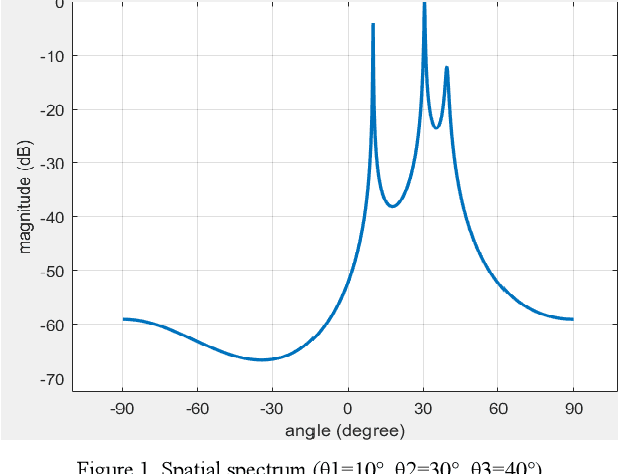

Abstract:A new array signal reconstruction and signal-channel DOA estimation method based on TMLA by nonuniform period modulation are proposed. By using non-uniform period modulation, the harmonic component produced by different elements could be separated. Therefore, the conventional snapshot could be reconstructed by analyzing the spectrum of the combined signal. Then spatial spectrum estimation method is used to implement DOA estimation. Numerical simulations are provided to verify the feasibility and accuracy of the proposed method. Since the duration of the signal in the frequency domain analysis processed in a single time is very short, this method is also applicable to narrowband signals. Another highlight is that this method can simultaneously measure the number of the elements-1 angle of incident signals.
Joint Active and Passive Beamforming Design for IRS-Aided Radar-Communication
Mar 28, 2022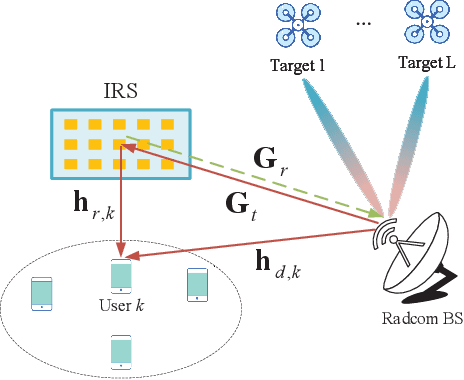
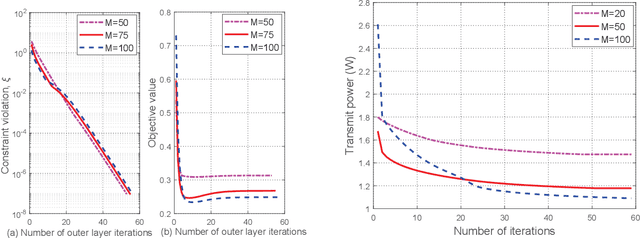
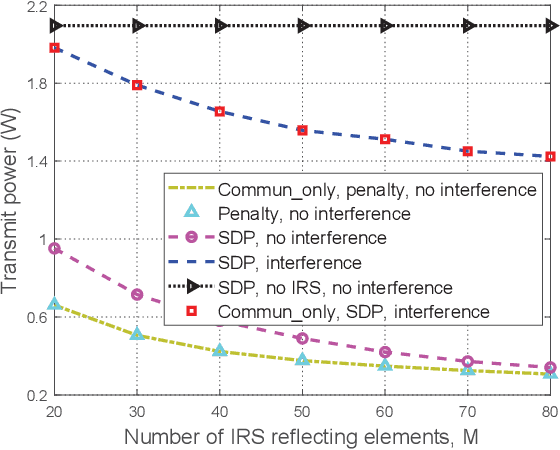
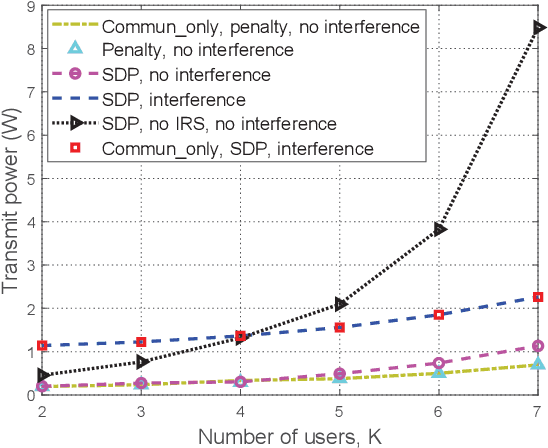
Abstract:In this paper, we study an intelligent reflecting surface (IRS)-aided radar-communication (Radcom) system, where the IRS is leveraged to help Radcom base station (BS) transmit the joint of communication signals and radar signals for serving communication users and tracking targets simultaneously. The objective of this paper is to minimize the total transmit power at the Radcom BS by jointly optimizing the active beamformers, including communication beamformers and radar beamformers, at the Radcom BS and the phase shifts at the IRS, subject to the minimum signal-to-interference-plus-noise ratio (SINR) required by communication users, the minimum SINR required by the radar, and the cross-correlation pattern design. In particular, we consider two cases, namely, case I and case II, based on the presence or absence of the radar cross-correlation design and the interference introduced by the IRS on the Radcom BS. For case I where the cross correlation design and the interference are not considered, we prove that the dedicated radar signals are not needed, which significantly reduces implementation complexity and simplifies algorithm design. Then, a penalty-based algorithm is proposed to solve the resulting non-convex optimization problem. Whereas for case II considering the cross-correlation design and the interference, we unveil that the dedicated radar signals are needed in general to enhance the system performance. Since the resulting optimization problem is more challenging to solve as compared with the case I, the semidefinite relaxation (SDR) based alternating optimization (AO) algorithm is proposed. Simulation results demonstrate the effectiveness of proposed algorithms and also show the superiority of the proposed scheme over various benchmark schemes.
Active IRS Aided Multiple Access for Energy-Constrained IoT Systems
Jan 29, 2022



Abstract:We investigate the fundamental multiple access (MA) scheme in an active intelligent reflecting surface (IRS) aided energy-constrained Internet-of-Things (IoT) system, where an active IRS is deployed to assist the uplink transmission from multiple IoT devices to an access point (AP). Our goal is to maximize the sum throughput by optimizing the IRS beamforming vectors across time and resource allocation. To this end, we first study two typical active IRS aided MA schemes, namely time division multiple access (TDMA) and non-orthogonal multiple access (NOMA), by analytically comparing their achievable sum throughput and proposing corresponding algorithms. Interestingly, we prove that given only one available IRS beamforming vector, the NOMA-based scheme generally achieves a larger throughput than the TDMA-based scheme, whereas the latter can potentially outperform the former if multiple IRS beamforming vectors are available to harness the favorable time selectivity of the IRS. To strike a flexible balance between the system performance and the associated signaling overhead incurred by more IRS beamforming vectors, we then propose a general hybrid TDMA-NOMA scheme with user grouping, where the devices in the same group transmit simultaneously via NOMA while devices in different groups occupy orthogonal time slots. By controlling the number of groups, the hybrid TDMA-NOMA scheme is applicable for any given number of IRS beamforming vectors available. Despite of the non-convexity of the considered optimization problem, we propose an efficient algorithm based on alternating optimization. Simulation results illustrate the practical superiorities of the active IRS over the passive IRS in terms of the coverage extension and supporting multiple energy-limited devices, and demonstrate the effectiveness of our proposed hybrid MA scheme for flexibly balancing the performance-cost tradeoff.
Antenna Array Enabled Space/Air/Ground Communications and Networking for 6G
Oct 25, 2021
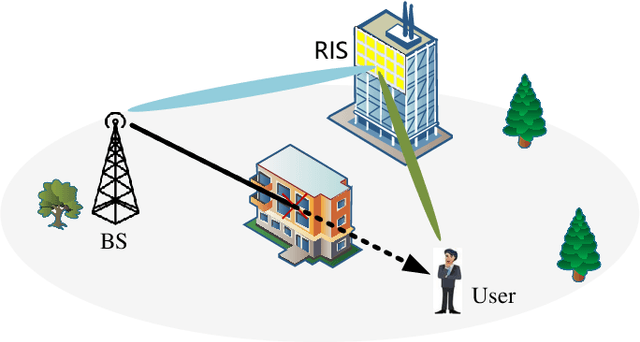
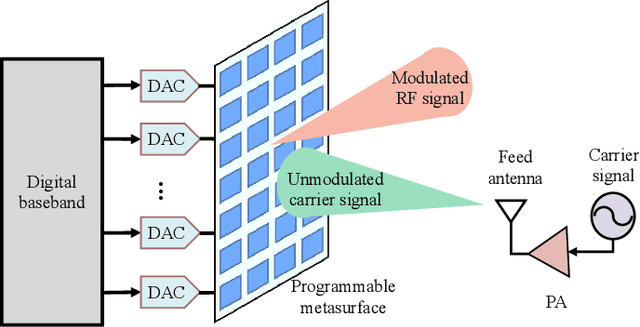

Abstract:Antenna arrays have a long history of more than 100 years and have evolved closely with the development of electronic and information technologies, playing an indispensable role in wireless communications and radar. With the rapid development of electronic and information technologies, the demand for all-time, all-domain, and full-space network services has exploded, and new communication requirements have been put forward on various space/air/ground platforms. To meet the ever increasing requirements of the future sixth generation (6G) wireless communications, such as high capacity, wide coverage, low latency, and strong robustness, it is promising to employ different types of antenna arrays with various beamforming technologies in space/air/ground communication networks, bringing in advantages such as considerable antenna gains, multiplexing gains, and diversity gains. However, enabling antenna array for space/air/ground communication networks poses specific, distinctive and tricky challenges, which has aroused extensive research attention. This paper aims to overview the field of antenna array enabled space/air/ground communications and networking. The technical potentials and challenges of antenna array enabled space/air/ground communications and networking are presented first. Subsequently, the antenna array structures and designs are discussed. We then discuss various emerging technologies facilitated by antenna arrays to meet the new communication requirements of space/air/ground communication systems. Enabled by these emerging technologies, the distinct characteristics, challenges, and solutions for space communications, airborne communications, and ground communications are reviewed. Finally, we present promising directions for future research in antenna array enabled space/air/ground communications and networking.
 Add to Chrome
Add to Chrome Add to Firefox
Add to Firefox Add to Edge
Add to Edge